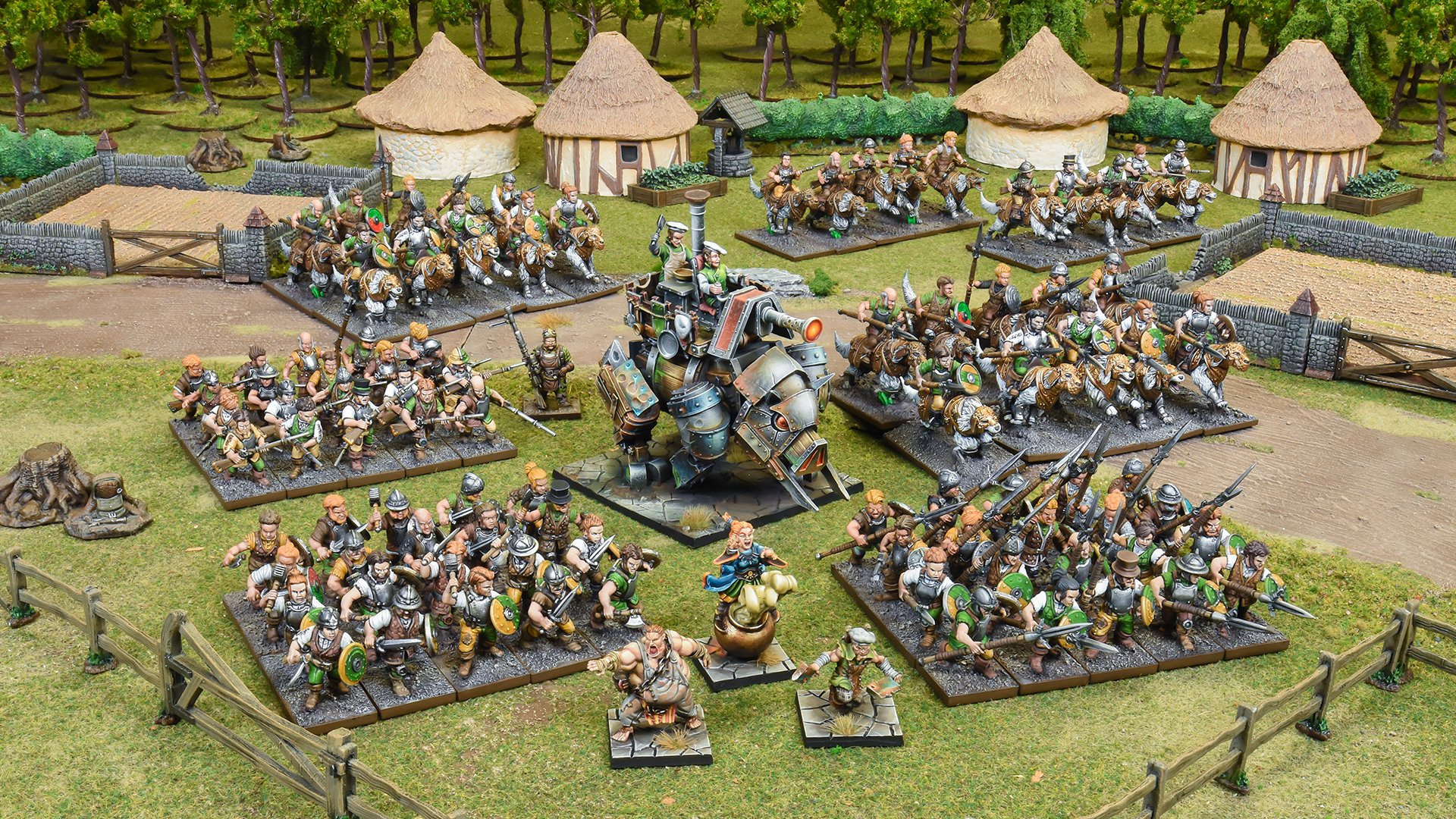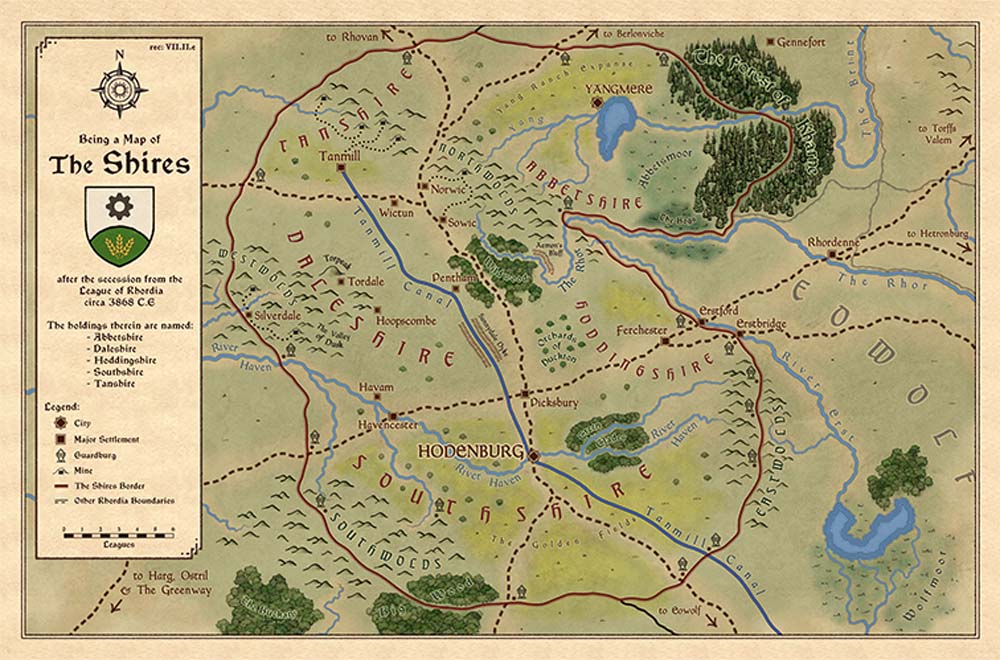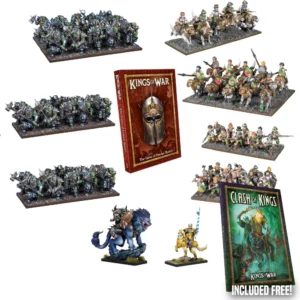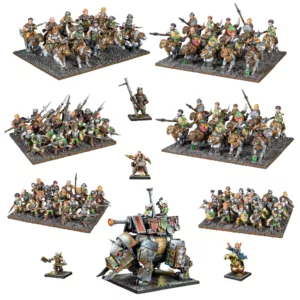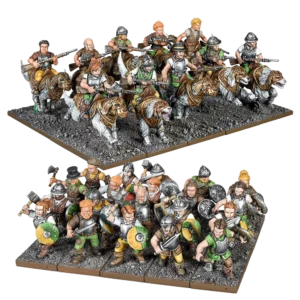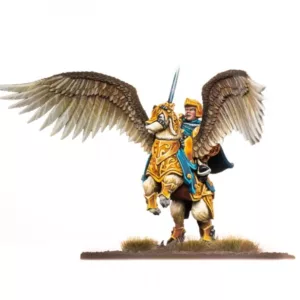Kings Of War – Getting to know the Halflings, more than half as well as you should like
15th Feb 2022
Jonny Mann
With the release of the new 2-player starter set “A Storm in the Shires” around the corner, we take a look at the lore and background around the two great armies that inhabit that shiny new box!
Today we start things of with a look at the Halflings!
The race of people known as the ‘halflings’ are, as their name would imply, rather short compared to the other peoples of Pannithor. The humans, elves, and even dwarfs are all taller, although generally not twice the size. The halflings do not refer to themselves as such, since in their eyes they are exactly the right size and it is the other races who are abnormally large. They generally just call themselves ‘The People’, although those who have settled in the Shires most often refer to themselves as ‘Shirefolk’. Those who settled in the southern regions near and within the elven city of Ej call themselves the ‘People of Ej’.
The first more detailed records of the halflings come from the dwarf archives. In the year 927, Naprastor, a chronicler in a dwarf hold on the western edges of the Mountains of Abkhazla, wrote that a detachment of rangers encountered a group of odd creatures camped on the edge of the hold’s grazing lands.
More accounts from dwarf, elven, and human sources record similar encounters in the following years. Several of these note that although the halflings would normally try to avoid trouble, but if forced to fight they did so with an unexpected ferocity. So much so that one human record dubbed them ‘The Wolverine People’.
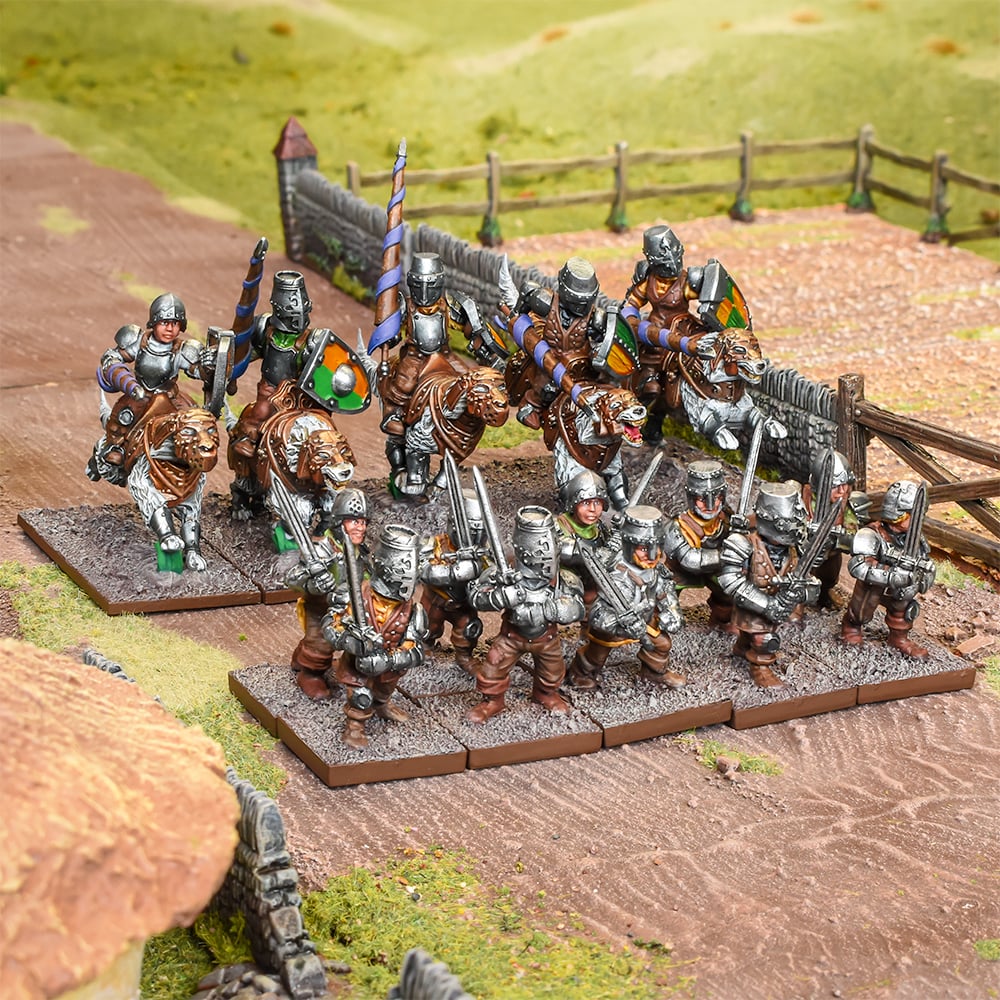
It was during the second millennium after the God War that the halflings adopted wide-scale use of both the wheel and writing, apparently learned from the elves, and gleaned from the dwarfs whose engineering they appeared to admire. Most of their crafts were of wood or linen at this time as their wandering lifestyle made crafting metal difficult. Halflings had therefore traditionally acquired most of their metal tools and weapons through trade. Rapid learners, halflings seemed to have an innate talent for tools and figuring out how things worked and so it’s no surprise that they began to have a reputation for ingenuity and tinkering.
Establishment of the Shires
In 2180 a large gathering of halflings came together under the direction of Bron Abbet, the leader of one of the larger clans. They met on the Ardovikian Plain in the lands to the north and west of the recently founded League of Rhordia. Abbet declared that he and his family were tired of the endless wandering. The land there was rich and fertile and nearly unoccupied. Abbet stated his intent to found a permanent settlement and invited the others to join him. There was a great deal of debate over such a radical idea, but in the end, the majority of the families agreed to stay. A region was staked out and named Abbetshire. The chief settlement was made near a lake and named Yangmere—which in tinker-tongue simply meant ’Laketown’.
Word of this quickly spread among the other halfling families in the region but most took a wait-and-see attitude at first. But after a dozen years without disaster befalling the settlers, many began to flock to Abbetshire and the population grew rapidly and other communities were founded. Countless years collating and subsuming all the knowledge of the peoples they had met on their travels began to pay off, and the accumulated wisdom was put to good use. At last able to make full use of their agricultural skills, Abbetshire was soon growing more food than was needed locally and trade was quickly established with surrounding human settlements, especially the nearby League of Rhordia.
The chief activity of the Shire halflings is undoubtedly agriculture. The lands seem blessed with perfect growing conditions, a stable climate and predictable, mild seasons. For years, renowned scholars and academics have studied the area and there is frequent speculation that sorcery is involved, for the surrounding areas are not nearly as bountiful. However, even the great arch-mages and professors from the Euhedral Library are at a loss to explain the phenomena.
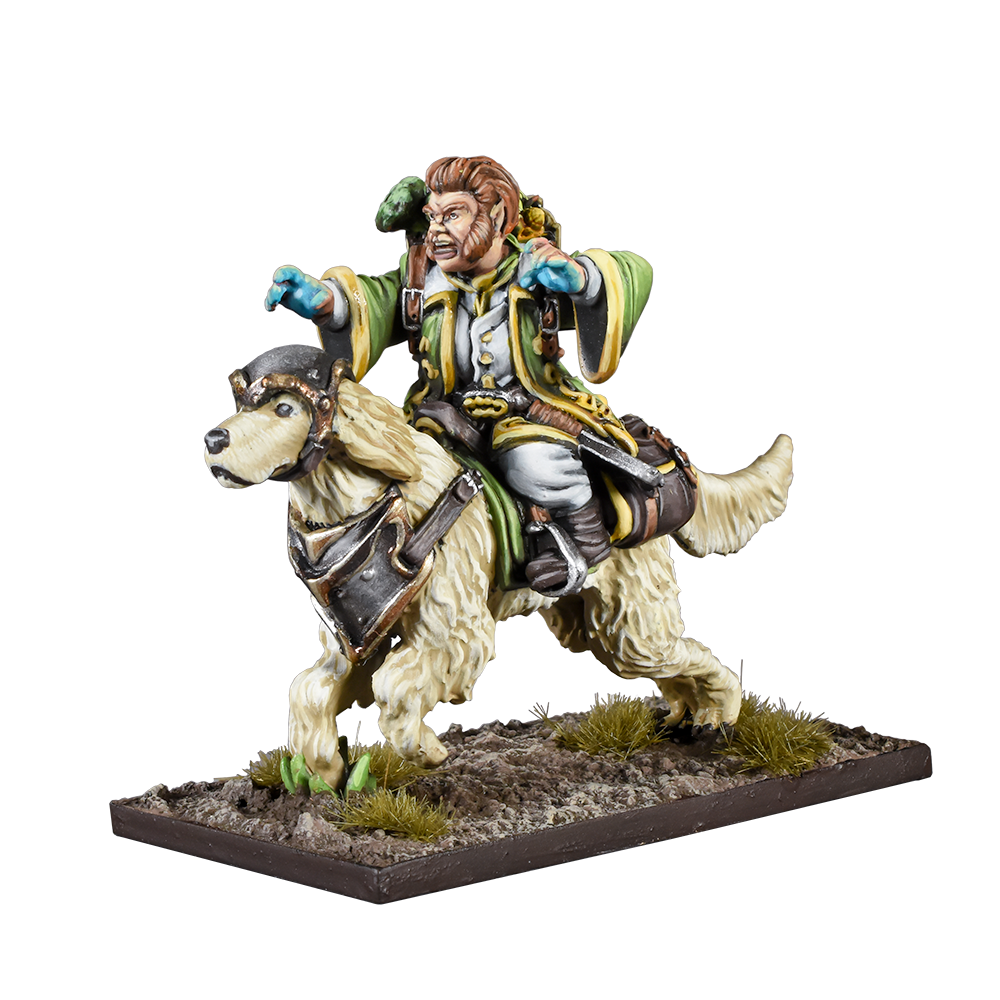
Defending the Shires
From its founding, defence of this new homeland was a major concern for the halflings. No longer able to simply avoid or flee from trouble, they had to be prepared to deal with it head on. The halflings planned for this in two ways: defensive structures and military forces.
The military forces of the halflings have evolved greatly over time. In their early wandering days every halfling capable of wielding a weapon was expected to be able to fight. Weapons were a variety of spears, axes, and clubs, and of course, bows. Archery had been a favoured halfling pastime from as far back as they can remember. It was a useful skill for gathering food, and in a fight, the ability to strike a (probably larger) foe before they could get close was often the difference between life and death.
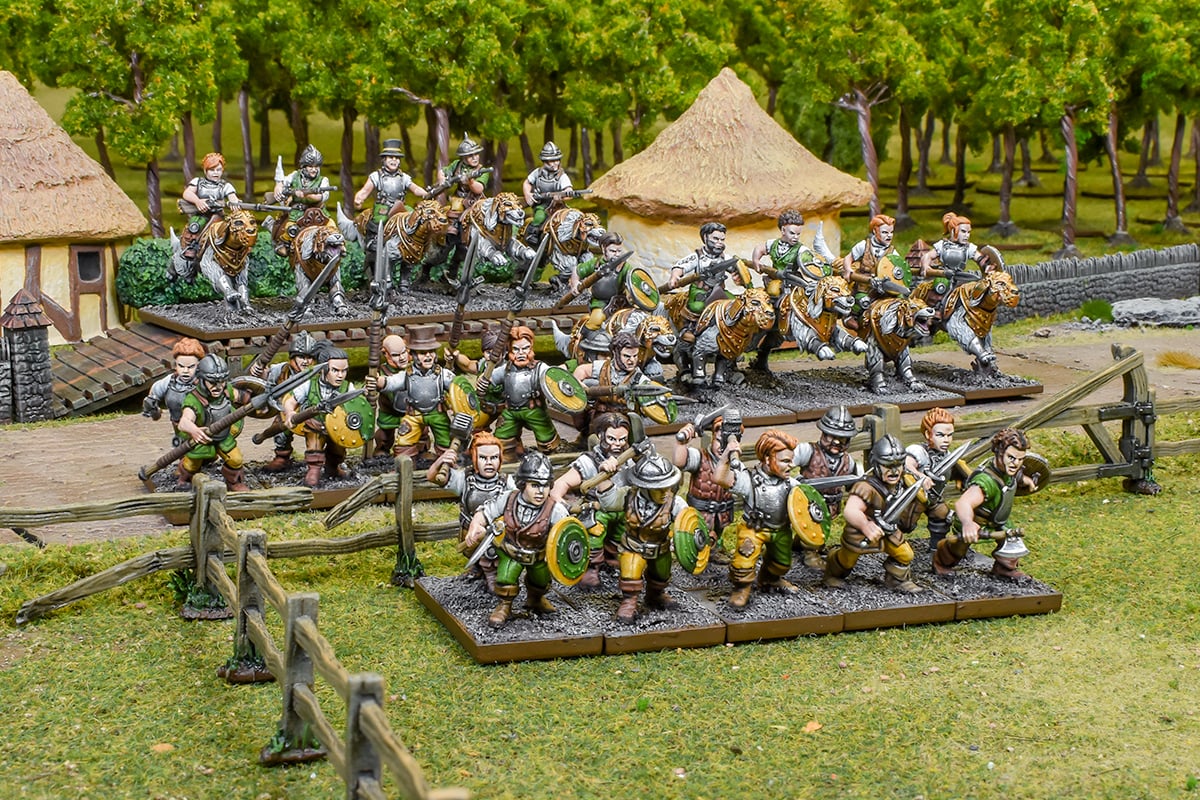
With the passage of time the halflings began to see the need for improved equipped and better trained troops. The example of the nearby League of Rhordia and several sharp encounters with roving bands of orcs convinced the Assembly to provide support and funding. First home made leather armour, and then later metal armour commissioned from the metalsmiths in the League, turned some of the Shires’ light infantry into heavy. Some of the largest halflings were given small horses and with metal armour became their first heavy horse. Both the infantry and cavalry trained in close order movements and formations copied from the humans and after a few years the Shires had a force to be reckoned with.
Joining the League of Rhordia
As the centuries passed, the Shires and the League of Rhordia grew closer and closer. Trade between them became a vital part of both economies. The League was especially dependent on Shires-grown food, and the halflings got most of their metals from the League. More than a few halflings moved to the human cities of the League to expand their businesses and a few humans even relocated to the Shires. The trade became so important that the Tanmill Canal was extended all the way to the League city of Eowulf.
Military cooperation was established and threats to their borders were often met by joint halfling-human armies. In 3712 a particularly dangerous orc invasion was defeated by the combined armies and ten years later the Shires formally joined the League.
It was a mutually beneficial arrangement, but not without some drawbacks. The League became more and more dependent on food imports from the Shires and the Shires became more and more dependent on the military power of the League to defend it. The halflings, never natural soldiers, slowly let their heavy infantry and cavalry units dwindle and disappear and fielded more and more light infantry and cavalry such as they had in the early days of the trained bands. As long as the alliance with the League remained strong, this wasn’t a serious problem and in fact, the combination of League heavy infantry and cavalry teamed with the light cavalry and infantry of the Shires proved a very effective one.
But sadly the alliance with the League collapsed with shocking swiftness…
About a century after the forming of the alliance, relations between the Shires and the League started to deteriorate. The humans accused the halflings of overcharging on the food they sold them, and the halflings complained that the taxes they paid to support the League military were too high. Insidious, anti-halfling feelings and aggressive non-human policies began circulating and infecting the League. Many cast suspicious eyes at the mysterious and sinister advisors that had slowly begun to appear at the sides of the League barons. Other rumours linked the change in opinion to the same wave of human-centric politics emanating from Valentica and spreading north. At first it was just grumbling, but soon it became more serious with anti-halfling violence in the League cities growing at an alarming rate. A few suspected that this crumbling of friendship had some darker source, but could not discover it.
After only a few years things became so serious that the Shires withdrew from the League, and established a trade embargo against them. The League, fearing a famine without Shire-grown food, declared war and began a campaign to subjugate the Shires and turn them into serfs.
Presently, although the differences between the Shires and the League of Rhordia have been patched up and pledges of friendship made, the Shires have not re-joined the League and do not intend to. Nor have they forgotten the lessons they learned. They now maintain a well-balanced and well-led army of their own. While they will cooperate with the League when it suits them, the Shires’ defence is in the hands of the halflings alone.
